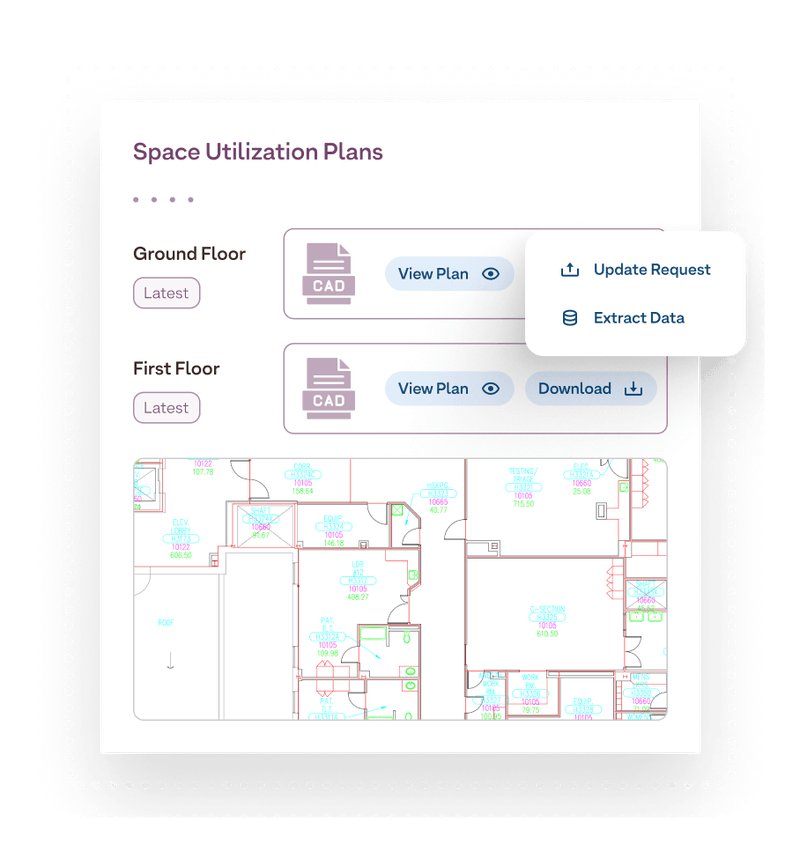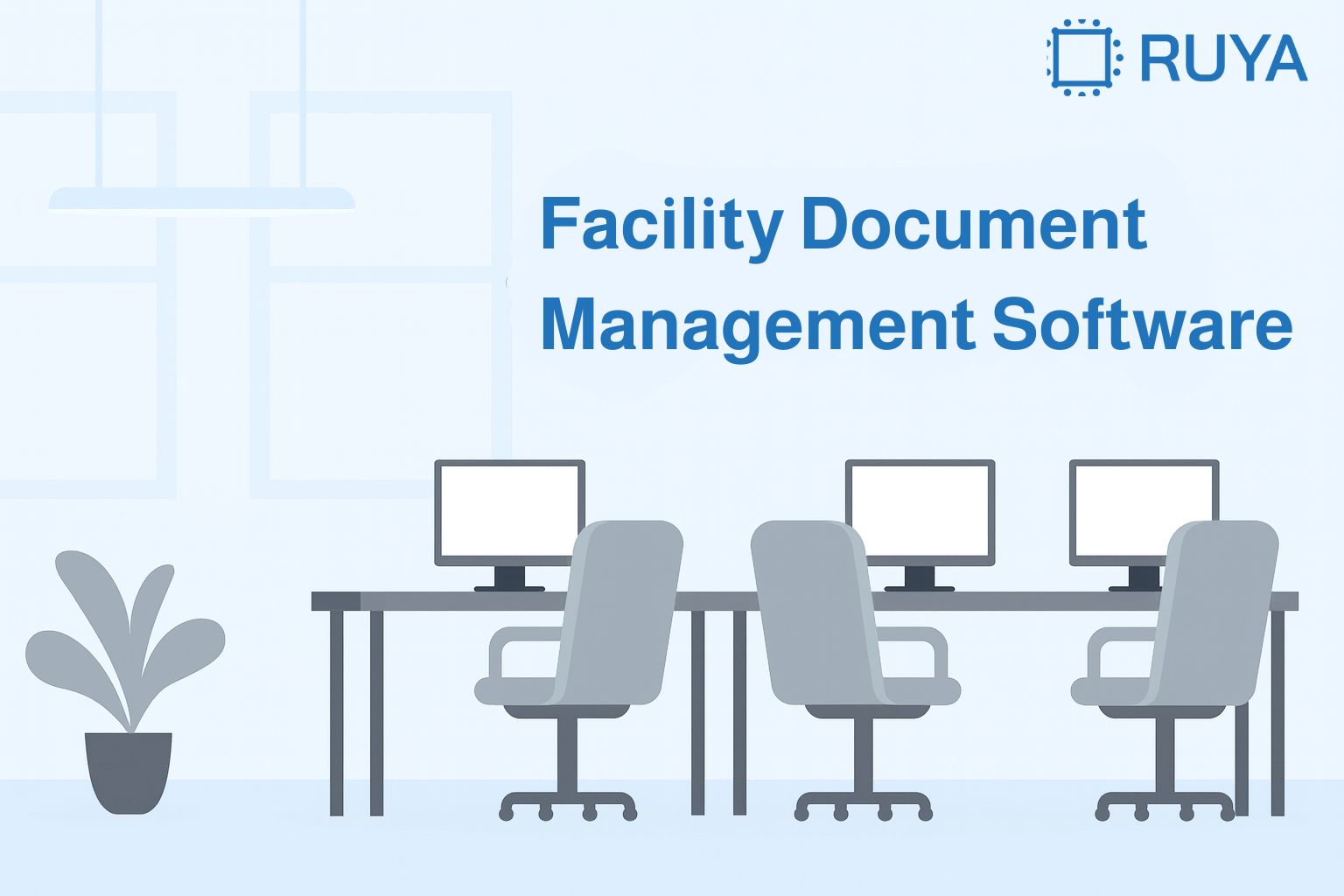What is the Importance of Compliance in Healthcare? Key Benefits for Facilities

Quick summary
This article explores the importance of compliance in healthcare facility management, highlighting its direct impact on patient safety, operational efficiency, and organizational reputation. We’ll break down the role of CMS and accrediting bodies, identify common compliance challenges, and show how Ruya simplifies compliance across complex healthcare portfolios.
Wondering why compliance is critical to patient safety and your bottom line?
In healthcare, compliance is a critical strategy, not just a regulatory hurdle. A single missed inspection or outdated life safety plan can trigger CMS survey deficiencies, delay Medicare or Medicaid reimbursements, and erode patient trust.
Managing sprawling campuses with aging infrastructure, tight budgets, and ever-changing regulations makes this even harder. That’s why leading healthcare systems now treat compliance as a strategic priority, one that protects patients, streamlines operations, and safeguards funding.
In this Ruya article, we’ll break down the importance of compliance in healthcare, the role of CMS in shaping standards, and how hospitals can stay ahead while reducing operational strain.
But first…
Why listen to us?
At Ruya, we specialize in healthcare facility compliance, helping hospital systems manage complex portfolios and meet CMS standards with ease. We’ve supported numerous large health networks, giving us deep insight into the challenges leaders face. This expertise allows us to deliver clear, practical guidance on why strong compliance strategies are vital for patient safety, operational efficiency, and long-term success.

What compliance means in healthcare facility management
While compliance in healthcare covers a wide range of regulations, facility compliance focuses on the physical environment—the infrastructure, equipment, and operational systems that keep hospitals safe, functional, and eligible for reimbursement.
The Centers for Medicare & Medicaid Services (CMS) sets these baseline requirements through its Conditions of Participation (CoPs). Passing these inspections is essential for certification and funding. Accrediting bodies like The Joint Commission (TJC) help enforce these standards, focusing on fire safety, infection control, emergency preparedness, and infrastructure readiness.
Key regulations include:
- CMS Conditions of Participation (CoPs): Set by the Centers for Medicare & Medicaid Services, these standards cover key areas such as quality assessment, patient rights, emergency preparedness, and infection control. They ensure that healthcare facilities maintain high standards of care and patient safety.
- Life Safety Code (LSC): Mandated by CMS, the LSC sets fire protection requirements critical to healthcare facilities' safety. It addresses building design, construction methods, and operational protocols to reduce risks from fire, smoke, and panic.
- Occupational Safety and Health Administration (OSHA) Standards: These regulations focus on workplace safety, including hazard communication, personal protective equipment, and emergency preparedness, all aimed at safeguarding healthcare workers.
- Health Insurance Portability and Accountability Act (HIPAA): HIPAA ensures the protection of health information, maintaining patient privacy and security within healthcare settings.
- Affordable Care Act (ACA): Though focused primarily on healthcare coverage, the ACA also impacts facility operations, emphasizing quality care and patient safety.
Together, these regulations form a comprehensive framework for safety and readiness, requiring healthcare facilities to operate at a consistently high standard.
Importance of compliance in healthcare facility management
1. Safeguarding your facility against legal and financial risks
Ignoring compliance can be incredibly costly. Non-compliance can lead to massive fines, lawsuits, and even the loss of accreditation, which can effectively shut down a facility's operations. For example, a single HIPAA violation (Health Insurance Portability and Accountability Act) can result in fines of up to $50,000, with an annual maximum of $1.5 million.
Beyond these direct penalties, failing to comply can lead to delayed or denied insurance reimbursements, costly data breaches, and extensive remediation expenses. Maintaining compliance is a smart business strategy that safeguards your facility's financial stability and ensures long-term viability.
2. Improving patient safety and quality of care
Compliance is directly linked to patient safety and the overall quality of care. By meticulously following established safety protocols, healthcare facilities actively reduce the risk of medical errors and healthcare-associated infections. This extends directly to the physical environment.
For instance:
- Infection Control: HVAC systems are properly maintained, and strict cleaning protocols are enforced to prevent the spread of pathogens.
- Fire and Life Safety: Adhering to the Life Safety Code (LSC) means regularly inspecting fire doors, sprinkler systems, and emergency exits to ensure that patients and staff can be safely evacuated in an emergency.
- Operational Systems: Critical systems like emergency power generators, medical gas lines, and plumbing are regularly inspected and maintained to prevent life-threatening failures.
In essence, compliance isn’t just a checklist of regulations; it’s about creating a strong culture of safety that enhances the entire healthcare experience and prioritizes patient well-being.
3. Building trust and a strong reputation
A commitment to compliance is a visible sign that your facility is dedicated to safety, quality, and ethical practices. When patient see that you meet these high standards, from a clean waiting room to properly maintained medical equipment, their confidence and trust in your care grow.
A strong compliance record also strengthens a facility's reputation, making it more appealing to top medical professionals and ensuring long-term success. On the flip side, a poor compliance record can damage your reputation, lead to a loss of patient trust, and cause lasting financial harm.
Challenges in maintaining healthcare facility compliance
Regulatory complexity
Healthcare regulations are always changing, with new laws and updates being introduced to improve patient care and safety. This frequent evolution is a major challenge, especially for smaller clinics with limited staff and resources.
Staying informed requires continuous monitoring and a proactive approach. To address this, many organizations establish a dedicated compliance team or work with external consultants who specialize in tracking regulatory updates.
Data and cybersecurity risks
Protecting patient privacy is a top priority, but many healthcare organizations struggle with the technical demands of data security. Issues like outdated technology and a lack of robust data governance can create vulnerabilities.
These weaknesses make healthcare facilities prime targets for cyberattacks, which can lead to data breaches, significant financial penalties, and a loss of patient trust. To combat this, facilities must invest in compliance management solutions, cybersecurity infrastructure, regular audits, and staff training on data protection laws.
Resource constraints
Limited resources, both financial and human, are also major barriers to compliance. Facilities may lack the necessary budget to invest in new technology, infrastructure, or a sufficient number of trained staff to manage compliance programs. This can lead to non-compliance, as staff may be overworked or lack the proper training to follow protocols.
A strategic approach involves prioritizing essential investments in staff education and leveraging compliance management software to automate tasks and streamline processes.
Cultural Resistance
Sometimes, the biggest challenge is internal. Cultural resistance to change or a general lack of awareness can prevent staff from adhering to compliance protocols. Simply having rules in place isn't enough if staff don't understand or value their importance.
Overcoming this requires strong leadership that champions a culture of compliance. Regular training, clear communication, and positive reinforcement are essential to ensure that every team member sees their role in maintaining safety and quality standards.
How technology transforms healthcare compliance
Healthcare organizations now use specialized software and digital platforms to move beyond manual, fragmented processes to a more efficient and reliable compliance system. This transition comes with key benefits like:
Centralized data and information
Technology replaces scattered spreadsheets and paper-based records with a single, centralized hub for all compliance-related information. This ensures that facility data, including floor plans, asset registries, and inspection reports, is always accurate and accessible.
Streamlined Processes
Compliance software automates repetitive tasks like scheduling inspections and generating reports, saving time and reducing human error. For example, the use of QR-code-enabled inspections eliminates the need for manual data entry, ensuring that every checklist is completed and digitally logged in real time.
Proactive risk management
Technology provides powerful analytics that can identify compliance trends and potential risks before they become major problems. By tracking inspection failures, maintenance backlogs, and equipment lifecycles, these systems offer a clear overview of a facility's compliance status, allowing for timely interventions.
Seamless collaboration
Platforms designed for compliance improve communication among different departments and external partners. They allow architects, engineers, and facility managers to work from a single source of truth.
Streamline healthcare facility compliance with Ruya
Compliance isn’t optional; it’s a mission-critical part of protecting patients, keeping operations smooth, and securing funding. But with aging infrastructure, evolving CMS requirements, and limited resources, staying compliant can overwhelm even the best teams.

Ruya was designed for healthcare leaders managing large, complex facilities. Our platform simplifies compliance by centralizing data, automating tasks, and providing real-time visibility across your entire portfolio. With Ruya, you get:
- Real-time, centralized access: View and update floor plans (PDF, DWG, Revit formats), vendor details, and asset records on the go, ensuring always up-to-date information.

- Faster inspections and streamlined maintenance: Use QR-code inspections to instantly flag issues and trigger maintenance, while tracking everything per-building for easy data management.

- Seamless integration: Minimize IT reliance while fitting into your existing workflows, making compliance easier and more cost-effective.
Request a demo today and see how Ruya transforms healthcare facility compliance into a smooth, proactive process.

.svg)

